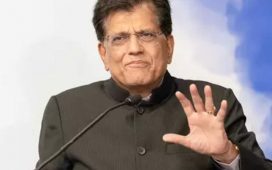You would be forgiven for thinking that the debate on nuclear power is pretty much settled. Sure, there are still some naysayers, but most reasonable people have come to realise that in an age of climate crisis, we need low-carbon nuclear energy – alongside wind and solar power – to help us transition away from fossil fuels. In 2016, 400 reactors were operating across 31 countries, with one estimate suggesting roughly the same number in operation in mid-2023, accounting for 9.2% of global commercial gross electricity generation. But what if this optimism were in fact wrong, and nuclear power can never live up to its promise? That is the argument the physicist MV Ramana makes in his new book. He says nuclear is costly, dangerous and takes too long to scale up. Nuclear, the work’s title reads, is not the solution.
This wasn’t the book Ramana, a professor at the University of British Columbia, planned to write. The problems with nuclear are so “obvious”, he wagered, they do not need to be spelled out. But with the guidance of his editor, he realised his mistake. Even in the contemporary environmental movement, which emerged alongside the anti-war and anti-nuclear movements, there are converts. Prominent environmentalists, understandably desperate about the climate crisis, believe it is rational and reasonable to support nuclear power as part of our energy mix.
But with a PhD in physics, and a previous book examining why India’s nuclear programme had not worked and would not work, Ramana is well versed in not just the moral but the technical and practical arguments against nuclear. He lays these out in his new work and then looks at what he originally set out to explore: why, despite the overwhelming evidence against nuclear, governments and corporations continue to invest in it.
When we speak online, he obligingly takes me through the problems in detail. It is gone 11pm in Canada, but Ramana, who is enthusiastic and affable, patiently and carefully explains why he thinks each justification I put to him is wrong.
Perhaps most urgently, the risks of nuclear are too great, he says. The technology works in the sense that there are reactors operating and producing electricity, Ramana says, but it isn’t stable. In physics, you have what are called emergent properties, and we know how atoms behave, but when you put a group of them together, he says, “they start doing things which the individual atoms never do by themselves”. Technology is similar, he says, drawing on the work of the social scientist Charles Perrow. When you bring different elements of nuclear reactors together, they might work together in unpredictable ways. For example, if you add in a safety mechanism for one component, this makes the system more complex, which increases the potential pathways for new accidents.
Though major malfunctions are rare, the likelihood of them happening is exacerbated by “extreme weather patterns due to climate change”, says Ramana, and cost-cutting measures made by companies that care primarily about the bottom line.
Fukushima was a turning point for some environmentalists. Where Chornobyl was read as a warning of the dangers nuclear posed, here there was a considerable disaster but no one received a lethal dose of radiation; if that is as bad as it gets, maybe there is not so much to be worried about, especially since then the technology has improved since it was built? Not so, says Ramana. “There’s a definite relationship between your exposure to radiation and cancer,” he says, adding that there is “no evidence” showing “that below a certain threshold, there is no risk of cancer”. “The absence of evidence,” he says, “is not evidence of absence.”
This is not how nuclear is sold to communities where plants are located, he says. What do government and industry tell a community, such as Wylfa on Anglesey (Ynys Môn), where there had been talk of building another nuclear plant? That there is a small chance – small but not zero – that there might be an accident that will mean you have to leave your home and potentially never come back? Or that it is completely safe? It is almost always the latter and that is simply not honest, he says. The safest assumption is that radiation, even at the lowest levels, is dangerous. This is true for waste, too, which remains radioactive for hundreds of thousands of years and cannot currently be safely managed in the longer term, meaning it could contaminate the biosphere at some point.
What about the argument that the industry provides jobs to people who need them, and could supply energy to so many around the world who currently go without? Who are we in the developed world to stand in the way of this? Nuclear creates fewer jobs than renewables per unit of energy generated, he says in the book, and when it comes to the latter, jobs are more geographically distributed. As for supplying vast amounts of energy globally, he sayd nuclear cannot be scaled up fast enough to “match the rate at which the world needs to lower carbon emissions” or to quickly provide to those without. It takes at least 15 to 20 years to plan for and build a nuclear plant and this would probably be much more difficult in the many countries that presently do not have the infrastructure for it.
Finally, Ramana is keen to point out that the nuclear energy industry only survives because of government support. Through electricity bills and taxes, the public often pay a significant amount toward building and running nuclear plants, as well as storing the waste. Governments also provide subsidies, skew electricity markets in favour of nuclear and form such tight relationships with industry that they end up repeating their propaganda, he says.
A key reason governments sink so much money into nuclear is because of how tightly bound up it is with nuclear weapons, which ostensibly guarantee a country’s security and strength, Ramana says. “Technically speaking, having a nuclear reactor means you’re going to have more capacity to make nuclear weapons,” he says, including through interchangeable personnel.
But where nuclear is not up to the task, renewables are, says Ramana, pointing to the statistics. The share of global energy produced by nuclear reactors is down from an estimated 16.7% in 1997 to 9.2% in 2022, largely owing to cost and the slow rate of deployment. Meanwhile, in the first half of 2024, wind and solar generated 30% of all of the EU’s electricity, narrowing the role of fossil fuels. The International Energy Agency suggests that by 2028, renewable energy sources will account for over 42% of global electricity generation.
after newsletter promotion
Renewables need not result in unplanned blackouts, as is often suggested, if the electricity grid drew on a diverse number of sources and improved storage. “This is how we get water in our taps,” says Ramana, “[even though] it doesn’t rain all the time.”
That is not to say renewables are a panacea. They too have environmental and health consequences, Ramana says in the book, and can involve exploiting people, land and resources. “The world needs to reduce its material throughput by producing and consuming less,” he says.
We talk the day of the UK’s general election in July, and I want to know what he would advise this new Labour government, which talks glowingly of the country becoming a “clean energy superpower”. He does not hesitate. First, abandon building new nuclear plants. There is no reason to expect Sizewell C will be any different from Hinkley Point C. Second, it is “barking up the wrong technological tree”, and instead of investing in small modular reactors – which, he says, have broadly the same problems as their bigger counterparts – it should squarely focus on renewables and storage. Third, it is not feasible to shut down existing nuclear plants tomorrow but ministers should start planning for it now. Ultimately, he says, the government should accept that the great promises of nuclear will not and cannot materialise.
“Sun turns nuclear energy from its core into the energy of sunlight,” the physicist Keith Barnham wrote in 2014. This means, the author Richard Seymour writes, “the question is whether, instead of building nuclear reactors on Earth, we can rely on the nuclear fusion reactor at the core of the sun”. Ramana’s answer is yes. Not only because we can but because we must.










